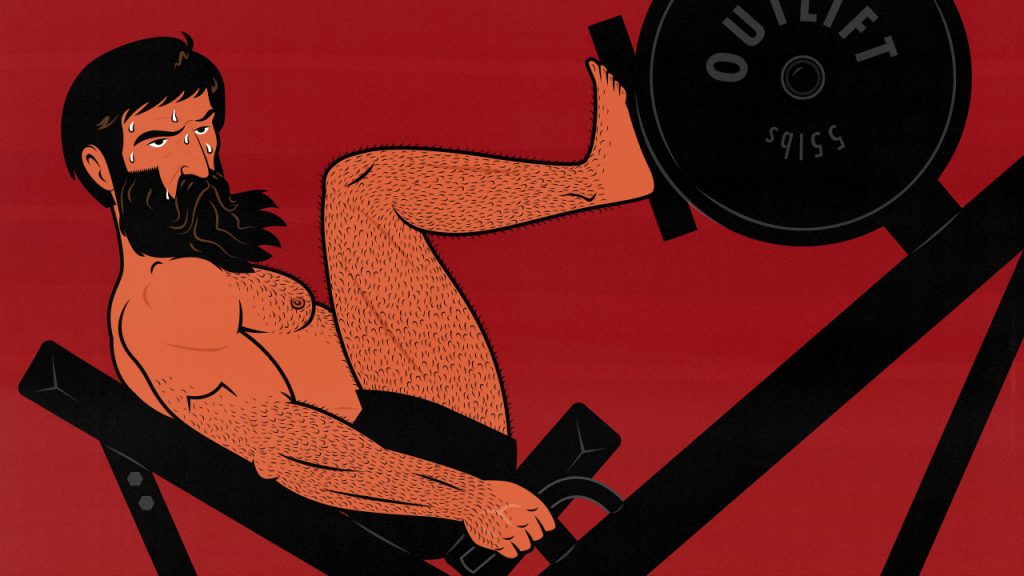
The Best Leg Press Alternatives
The leg press is great for your quads and glutes, and it makes a good calf-raise machine. Some at-home alternatives are even better, especially if you have dumbbells or a barbell. If you don’t, we’ll give you some bodyweight exercises, too.
Muscles Worked by the Leg Press
The leg press is a simple exercise. You extend your knees, working your quads, and extend your hips, working your glutes. That’s really all there is to it.
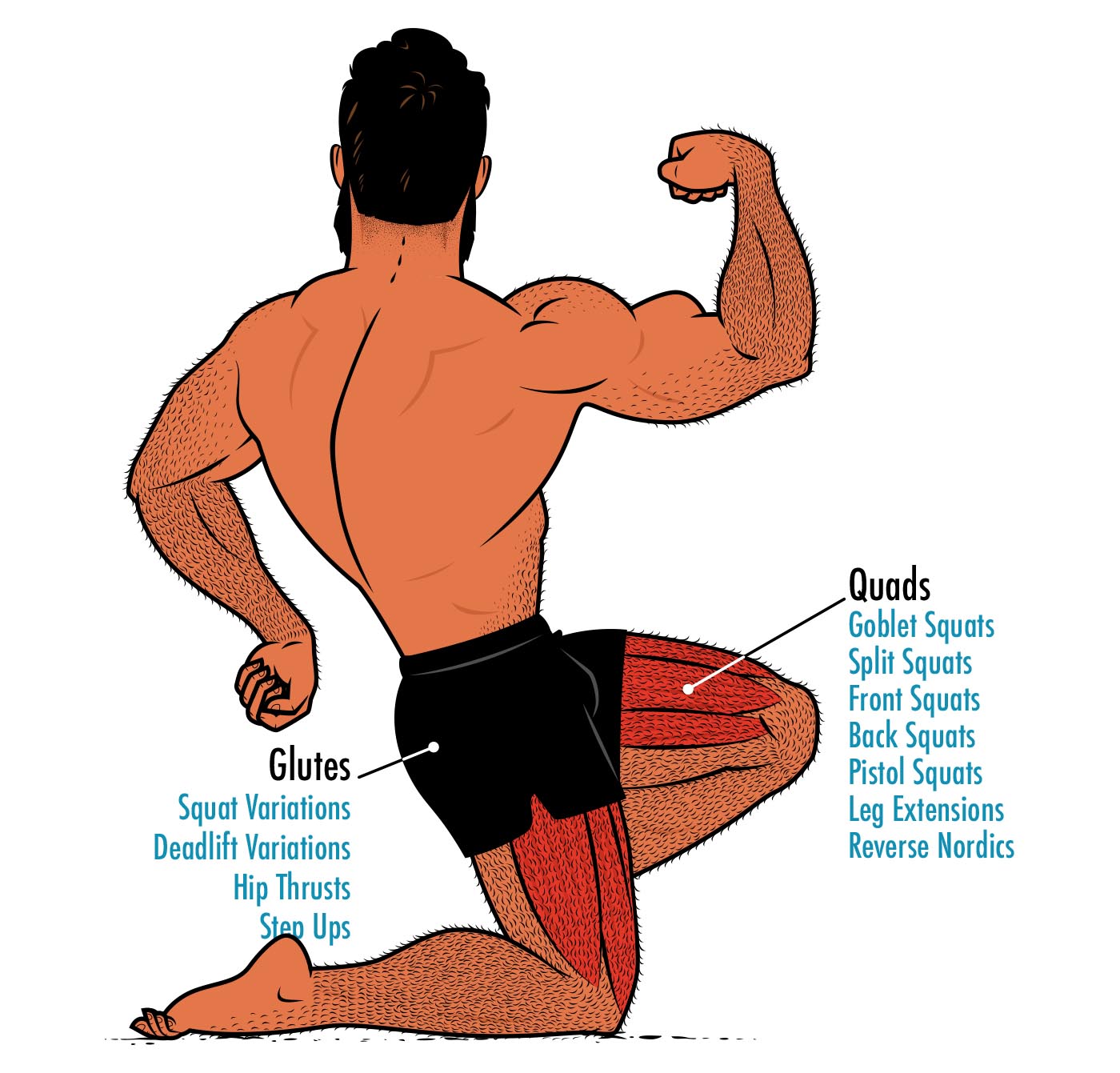
Leg Presses are Easy to Replace
Leg presses are a type of squat. They’re a squat with your upper body removed, making them simpler, easier, and less fatiguing. That isn’t necessarily a good thing. Regular squats give you just as much leg growth AND some extra upper-body growth. Squats also do a better job of improving your coordination and general strength. Even the fatigue is usually a good thing.
- If you’re training at home with dumbbells, you can replace the leg press with dumbbell goblet squats, split squats, or front squats.
- If you have a barbell, you can replace it with barbell front squats, back squats, or split squats.
- If you’re using your body weight, you can do bodyweight split squats, pistol squats, or reverse Nordics.
- If you’re training at a full gym, you can do hack squats, leg extensions, and smith-machine squats.
There’s only one problem. If you’re doing a Leg Day or Lower-Body Day, then the leg press is usually programmed after your squats. You’re supposed to do both. There isn’t really any special need for it, though. The leg press works your legs the exact same was as a squat does, just with less stress on your postural muscles.
It isn’t like the bench press and overhead press, where each lift works different pressing muscles. Or like pull-ups and biceps curls, where the biceps curl does a better job of working the long head of your biceps. Squats and leg presses work exactly the same muscles in exactly the same way. The only difference is that squats also work your postural muscles.
If you want a leg press alternative that’s easy on your spine and spinal erectors, consider lighter squat variations like goblet squats, split squats, and reverse Nordics. Even front squats and back squats are easy on your spine when compared to deadlift variations (like conventional deadlifts).
Once you’ve done your squatting, you can do some reverse Nordic curls (bodyweight leg extensions). Leg presses and squats struggle to hit the fourth head of your quads, the rectus femoris (study). Reverse Nordics are great for that. They also give your quads more stimulus without fatiguing your spinal erectors.
Dumbbell Leg Press Alternatives
Dumbbell Goblet Squat
The dumbbell squat is the best dumbbell leg press alternative. It’s simple to learn, easy to master, and it works your quads through a deep range of motion. It has the extra benefit of working your postural muscles, making it arguably even better than the leg press. I’ve written more about its many benefits here.
The problem with the goblet squat is that you’ll eventually grow too strong for it, especially if you’re training at home with lighter dumbbells. At that point, you’ll need to hold two dumbbells (a dumbbell front squat) or train your legs one at a time (the dumbbell split squat).
Double-Dumbbell Front Squats
When you grow too strong for goblet squats, you can grab a second dumbbell and rest them both on your shoulder girdle. This lets you go twice as heavy, giving you more room to grow.
Dumbbell Split Squat
The dumbbell split squat allows you to get more stimulation out of less weight. You can hold a dumbbell in each hand, giving you twice as much weight as with a goblet squat. It also trains your legs one at a time, making the exercise heavier than double-dumbbell front squats.
The problem with split squats is that they’re quite a bit harder than leg presses. With a leg press, you can just plug in and push. Split squats force you to develop a strong grip and groin. You need the coordination not to fall over. And you need twice as much grit because you need to train each leg separately. You’ll build even more muscle than with the leg press, though.
When regular split squats get too easy, you can raise your back leg up on a bench, turning them into “Bulgarian” split squats.
Barbell Leg Press Alternatives
Barbell Back Squat
The barbell back squat is the best barbell leg press alternative. I recommend using a classic “high-bar” squatting style, where you rest the barbell on top of your traps, sit down into the squat, and go as deep as you can.
Barbell back squats allow you to lift quite a bit of weight, but the weight rests right over your back muscles. The moment arm isn’t big enough to stress your postural muscles very much, especially compared to deadlifts. That makes it feel comparable to leg presses.
Barbell Front Squat
Front squats are my favourite squat variation. I think they offer the most benefits with the fewest downsides. They’re somewhat less like the leg press, though. They demand a tremendous amount of postural strength, working your upper back and core muscles quite hard.
However, front squats are also quite easy on your lower back, and they’re very safe. If you’re looking for a leg press alternative that’s easy on your lower back, front squats should serve you well.
Barbell Split Squat
The barbell split squat is just like the dumbbell split squat. The advantage is that the barbell allows you to go heavier. The problem is that it’s more complicated to set up.
Safety-Bar Squats
Safety-bar squats have the same dynamics as the front squat, but the bar rests more easily on your shoulders, making it easier and more comfortable. The problem is that you need a special safety-squat barbell (SSB).
Trap-Bar Deadlifts
Trap-bar deadlifts allow you to deadlift with more knee bend, turning them into more of a squat. They won’t work your quads under as deep of a stretch, though. You’d also need a special trap-bar barbell.
Bodyweight Leg Press Alternatives
Reverse Nordic Curls
The reverse Nordic curl is more like a leg extension than a leg press, but that can be a good thing. It won’t work your glutes, but it does an even better job of working all four heads of your quads. It’s also a pretty great core exercise, strengthening your abs and hip flexors.
If you combine these reverse Nordics with a deadlift alternative for your glutes and spinal erectors (which you need for your hamstrings anyway), then you’ve got a really elegant replacement for the leg press.
The only problem is that reverse Nordics are brutally challenging. You’ll need to develop quite a lot of strength and coordination before you can do the most advanced variations. That’s a good thing, though. It’s good to have bodyweight exercises you can grow into.
Pistol Squats
Pistol squats are similar to split squats, but you rest your entire weight on just one leg, and you work your quads through an even deeper range of motion. The problem is that it’s difficult to keep your balance, so you might want to start by holding onto something. That way, you can work your quads hard enough to stimulate muscle growth.



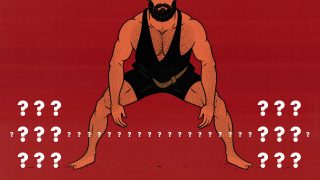
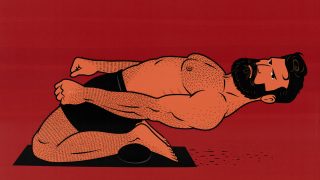
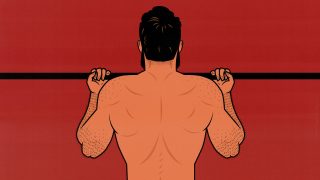
Can we do barbell front split squats?
Sure!
While doing split squats, how would the total load be distributed between the front leg (squatting leg) and the back leg (kneeling leg) ?
I already answered you on YouTube, but usually you’d have more than half of the load on the front leg. You could think of having 60–70% of the load on the front leg. I’m not sure how much weight is actually on the front leg, but that’s how you’d imagine it.
Thanks a lot!
My pleasure, man!
While doing split squats, if we take a very long stance (i.e. the front foot way forward of the hips), then I’d suppose the hamstrings and glutes will work harder because of largely reduced knee bend at the bottom?
I suspect you’re right, yeah.